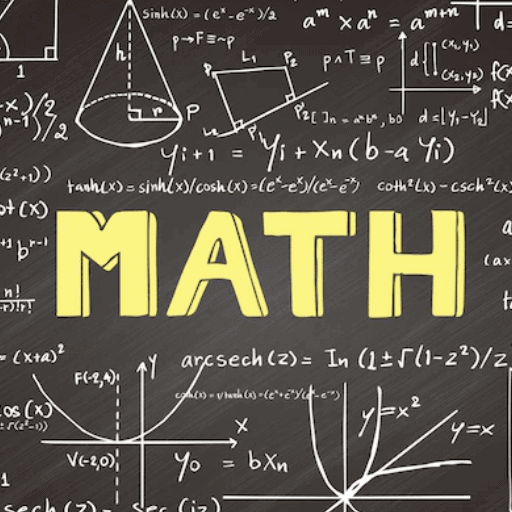JEE Advanced Previous Year Questions (2018 - 2024): Structure of Atom | Chemistry for JEE Main & Advanced PDF Download
2024
Q1: According to Bohr's model, the highest kinetic energy is associated with the electron in the(a) first orbit of H atom
(b) first orbit of He⁺
(c) second orbit of He⁺
(d) second orbit of Li²⁺ [JEE Advanced 2024 Paper 2]
Ans: (b)
According to Bohr's model of the hydrogen atom, the kinetic energy of an electron in a particular orbit is given by the expression
K.E. = 12 m v²
Where m is the mass of the electron and v is its velocity. However, a more useful expression involving only constants is:
K.E. = 13.6 eV Z²n²
Where Z is the atomic number and n is the principal quantum number of the orbit. This formula shows that the kinetic energy of the electron is directly proportional to the square of the atomic number Z and inversely proportional to the square of the orbit number n.
Let's analyze each option keeping the above formula in mind:
Option A: First orbit of hydrogen (H, Z = 1, n = 1)
K.E. = 13.6 eV × (1)²(1)² = 13.6 eV
Option B: First orbit of He⁺ (Z = 2, n = 1)
K.E. = 13.6 eV × (2)²(1)² = 54.4 eV
Option C: Second orbit of He⁺ (Z = 2, n = 2)
K.E. = 13.6 eV × (2)²(2)² = 13.6 eV
Option D: Second orbit of Li²⁺ (Z = 3, n = 2)
K.E. = 13.6 eV × (3)²(2)² = 30.6 eV
From the above calculations, it is evident that the highest kinetic energy is associated with the electron in the first orbit of He⁺ (Option B), which is 54.4 eV.
Q2: Among the following, the correct statement(s) for electrons in an atom is(are) [JEE Advanced 2024 Paper 1]
(a) Uncertainty principle rules out the existence of definite paths for electrons.
(b) The energy of an electron in 2s orbital of an atom is lower than the energy of an electron that is infinitely far away from the nucleus.
(c) According to Bohr's model, the most negative energy value for an electron is given by n = 1, which corresponds to the most stable orbit.
(d) According to Bohr's model, the magnitude of velocity of electrons increases with increase in values of n.
Ans: (a), (b), (c)
Let's analyze each statement one by one:
Option A: Uncertainty principle rules out the existence of definite paths for electrons.
This statement is correct. The Heisenberg Uncertainty Principle states that it is impossible to simultaneously know both the exact momentum and the exact position of a particle. Therefore, the concept of a definite path for electrons is not applicable according to quantum mechanics.
Option B: The energy of an electron in 2s orbital of an atom is lower than the energy of an electron that is infinitely far away from the nucleus.
This statement is also correct. The energy of an electron in any bound state (such as the 2s orbital) is always lower (more negative) than that of an electron at an infinite distance from the nucleus (which would have zero energy). This is because an electron infinitely far away from the nucleus is considered to be free from nuclear attraction and thus its potential energy is zero.
Option C: According to Bohr's model, the most negative energy value for an electron is given by n = 1, which corresponds to the most stable orbit.
This statement is correct as well. In Bohr’s model of the atom, the energy levels of electrons are given by:
En = -13.6 eVn²
The energy is most negative when n = 1, indicating the most stable orbit and thus the lowest energy state (the ground state).
Option D: According to Bohr's model, the magnitude of velocity of electrons increases with increase in values of n.
This statement is incorrect. According to Bohr’s model, the speed of an electron in a circular orbit around the nucleus decreases with an increase in the principal quantum number n. The velocity vn is given by the formula:
vn = 2.18 × 10⁶ m/sn
where n is the principal quantum number. Hence, as n increases, vn decreases.
Therefore, the correct statements are:
Option A, Option B, and Option C.
2023
Q1: For He+, a transition takes place from the orbit of radius 105.8pm to the orbit of radius 26.45pm. The wavelength (in nm) of the emitted photon during the transition is _______.
[Use : Bohr radius, a=52.9pm
Rydberg constant, RH = 2.2 × 10−18 J
Planck's constant, h = 6.6 × 10−34 J s
Speed of light, c = 3 × 108 m s−1 ] [JEE Advanced 2023 Paper 2]
Ans: 30
1. The radius of the nth orbit in a single-electron system is given by the equation:

where r is in pm, n is the principal quantum number, and Z is the atomic number.
2. For a He+ ion, Z = 2.
3. We are given the initial radius r2=105.8 pm and the final radius r1=26.45 pm.
4. We can substitute these radii into the equation for r to find the corresponding quantum numbers.
For r2 = 105.8 pm, we get :

which gives n2 = 2.
Similarly, for r1 = 26.45 pm, we get :

which gives n1 = 1.
5. Therefore, the transition is from n2 = 2 to n1 = 1.
6. The energy difference during this transition is equal to the energy of the emitted photon, which is given by :

where ℎ is the Planck's constant, c is the speed of light, RH is the Rydberg constant, and λ is the wavelength of the photon.
7. Substituting all known values into this equation gives :

Solving this equation yields λ = 30 × 10−9 m, or 30 nm.
8. So, the wavelength of the emitted photon during the transition is 30 nm.
2022
Q1: For diatomic molecules, the correct statement(s) about the molecular orbitals formed by the overlap of two 2Pz orbitals is(are) [JEE Advanced 2022 Paper 1]
(a) σ orbital has a total of two nodal planes.
(b) σ∗ orbital has one node in the xz-plane containing the molecular axis.
(c) π orbital has one node in the plane which is perpendicular to the molecular axis and goes through the center of the molecule.
(d) π∗ orbital has one node in the xy-plane containing the molecular axis.
Ans: (a) & (d)

Option (A) is correct.
Option (B) is incorrect.

π∗ orbital has zero node is the plane which is perpendicular to the molecular axis and goes through the center of molecule.
So, option (C) is incorrect.
π∗ Orbital has one node in the xy− plane containing the molecular axis.
Option (D) is correct.
2021
Q1: Consider a helium (He) atom that absorbs a photon of wavelength 330 nm. The change in the velocity (in cm s−1) of He atom after the photon absorption is __________.
(Assume : Momentum is conserved when photon is absorbed.
Use : Planck constant = 6.6 × 10−34 J s, Avogadro number = 6 × 1023 mol−1, Molar mass of He = 4 g mol−1) [JEE Advanced 2021 Paper 2]
Ans: 30
Wavelength of photon absorbed, � = 330 nm = 330 × 10−9 m
Planck's constant, h = 6.6 × 10−34 J s
Molar mass of He, M = 4 g mol−1 = 4 × 10−3 kg mol−1
Avogadro number, NA = 6 × 1023 mol−1
Mass of one atom of He, m = M/NA
= 
Velocity, = V cm/s.
Using de-Broglie equation,

= 30 cm/s
 |
Download the notes
JEE Advanced Previous Year Questions (2018 - 2024): Structure of Atom
|
Download as PDF |
2020
Q1: The figure below is the plot of potential energy versus internuclear distance (d) of H2 molecule in the electronic ground state. What is the value of the net potential energy E0 (as indicated in the figure) in kJ mol-1, for d = d0 at which the electron-electron repulsion and the nucleus-nucleus repulsion energies are absent? As reference, the potential energy of H atom is taken as zero when its electron and the nucleus are infinitely far apart.
Use Avogadro constant as 6.023 × 1023 mol-1. [JEE Advanced 2020 Paper 2]

Ans: − 5242.41
Given that, electrons and nucleus are at infinite distance, so potential energy of H-atom is taken as zero.
Therefore, according to Bohr's model, potential energy of a H-atom with electron in its ground state
= −27.2 eV
At d = d0, nucleus-nucleus and electron-electron repulsion is absent.
Hence, potential energy will be calculated for 2 H atoms = −2 × 27.2 eV = −54.4 eV
Potential energy of 1 mol H atoms in kJ
= 
= − 5242.4192 KJ
2019
Q1: Consider the Bohr's model of a one-electron atom where the electron moves around the nucleus. In the following List-I contains some quantities for the nth orbit of the atom and List-II contains options showing how they depend on n.

Which of the following options has the correct combination considering List-I and List-II?
(a) (III), (P)
(b) (III), (S)
(c) (IV), (U)
(d) (IV), (Q) [JEE Advanced 2019 Paper 2]
Ans: (a)
(III) Kinetic energy of the electron in nth orbit,

From List-II, correct match is (III, P)
(IV) Potential energy of the electron in the nth orbit,

From List-II, correct match is (IV, P).
Hence, correct matching from List-I and List-II on the basis of given options is (III, P).
Q2: Consider the Bohr's model of a one-electron atom where the electron moves around the nucleus. In the following List-I contains some quantities for the nth orbit of the atom and List-II contains options showing how they depend on n. 
Which of the following options has the correct combination considering List-I and List-II?
(a) (II), (R)
(b) (I), (P)
(c) (I), (T)
(d) (II), (Q) [JEE Advanced 2019 Paper 2]
Ans: (c)
(I) Radius of the nth orbit, r = 0.529 x n2 / Z
Here, r ∝ n2
From List-II, correct match is (I, T)
(II) Angular momentum of the electron, 
From List - II, correct match (II, S)
Hence, correct matching from List-I and List-II on the basis of given options is (I, T).
Q3: The ground state energy of hydrogen atom is −13.6 eV. Consider an electronic state ψ of He+ whose energy, azimuthal quantum number and magnetic quantum number are −3.4 eV, 2 and 0, respectively.
Which of the following statement(s) is(are) true for the state ψ?
(a) It is a 4d state
(b) The nuclear charge experienced by the electron in this state is less than 2e, where e is the magnitude of the electronic charge
(c) It has 2 angular nodes
(d) It has 3 radial nodes [JEE Advanced 2019 Paper 2]
Ans: (a) & (c)
Given, ground state energy of hydrogen atom = −13.6 eV
Energy of He+ = −3.4 eV, Z = 2
Energy of He+, 

Given, azimuthal quantum number (l) = 2 (d − subshell)
Magnetic quantum number (m) = 0
∴ Angular nodes (l) = 2
Radial node = n − l − 1 = 4 − 2 − 1 = 1
nl = 4d state
Hence, options (a), (c) are correct.
Q4: Which of the following statement(s) is(are) correct regarding the root mean square speed (Urms) and average translational kinetic energy (Eav) of a molecule in a gas at equilibrium?
(a) Urms is inversely proportional to the square root of its molecular mass.
(b) Urms is doubled when its temperature is increased four times.
(c) Eavg is doubled when its temperature is increased four times.
(d) Eavg at a given temperature does not depend on its molecular mass. [JEE Advanced 2019 Paper 1]
Ans: (a), (b) & (d)
The explanation of given statements are as follows :
(a) Urms is inversely proportional to the square root of its molecular mass.

Hence, option (a) is correct.
(b) When temperature is increased four times then Urms become doubled.

Hence, option (b) is correct.
(c) and (d) Eav is directly proportional to temperature but does not depends on its molecular mass at a given temperature as  . If temperature raised four times than Eav becomes four time multiple.
. If temperature raised four times than Eav becomes four time multiple.
Thus, option (c) is incorrect and option (d) is correct.
|
353 videos|587 docs|309 tests
|
FAQs on JEE Advanced Previous Year Questions (2018 - 2024): Structure of Atom - Chemistry for JEE Main & Advanced
| 1. What is the Bohr model of the atom and how does it explain the emission spectrum of hydrogen? |  |
| 2. What are the key differences between the Rutherford model and the Bohr model of the atom? |  |
| 3. What is quantum mechanical model of the atom and how does it differ from earlier models? |  |
| 4. How do quantum numbers describe the properties of atomic orbitals? |  |
| 5. What is the significance of the Pauli Exclusion Principle in the arrangement of electrons in an atom? |  |

































